You’ve heard about data enrichment strategies, but do you know how these 7 effective techniques can revolutionize your data management practices? From optimizing data quality to harnessing the power of segmentation, each strategy offers a unique approach to unlocking the full potential of your data assets. By implementing these proven methods, you can elevate your decision-making processes and drive unparalleled business growth. Ready to transform your data landscape? Let’s explore these strategies together.
Data Quality
Ensuring high data quality is paramount in any data enrichment strategy. By utilizing effective data enrichment techniques and tools, you can enhance the accuracy, completeness, and reliability of your data. Data enrichment techniques involve processes like data cleansing, normalization, and validation to eliminate errors and inconsistencies. Tools such as data enrichment APIs, data matching software, and data quality platforms play a crucial role in automating these processes and ensuring that your data is of the highest quality.
Data enrichment techniques enable you to enrich your existing datasets with additional information from external sources, improving the depth and breadth of your data. By leveraging data enrichment tools, you can streamline the data enrichment process, saving time and resources while enhancing the overall quality of your data. Implementing a robust data quality framework supported by effective techniques and tools is essential for making informed decisions, driving business growth, and maintaining a competitive edge in today’s data-driven landscape.
Data Profiling
When it comes to data profiling, you will engage in a comprehensive data quality assessment to ensure the accuracy and reliability of your information. By scrutinizing the quality of your data through various profiling techniques, you can identify inconsistencies, errors, and gaps that may impact your analytical outcomes. This initial step sets the foundation for effective data enrichment strategies by establishing a baseline of information accuracy for further enhancement.
Data Quality Assessment
Amidst the vast landscape of data management, Data Quality Assessment, commonly known as Data Profiling, serves as a crucial foundation for any successful data enrichment strategy. Data Quality Assessment involves the systematic evaluation of data to identify inconsistencies, errors, and gaps in information. By utilizing data enrichment techniques and tools, organizations can enhance the quality of their data, leading to improved decision-making processes and operational efficiency.
Data enrichment benefits include enhanced customer insights, better targeting for marketing campaigns, and improved overall data accuracy. However, organizations may face challenges such as data silos, outdated information, and incomplete datasets during the data quality assessment process. To overcome these obstacles, it is essential to employ advanced data enrichment tools that can automate the identification and correction of errors, ensuring data integrity.
Incorporating robust data quality assessment practices into your data enrichment strategy is essential for maintaining reliable and high-quality data, which forms the basis for successful business operations and informed decision-making.
Information Accuracy Check
To validate the accuracy of your data and ensure its reliability, conducting an Information Accuracy Check, also known as Data Profiling, is imperative. Data validation and error detection are fundamental aspects of this process. Here’s how you can effectively perform an Information Accuracy Check:
- Data Validation: Begin by assessing the consistency, completeness, and conformity of your data. Look for anomalies, missing values, or inconsistencies that could impact the overall accuracy of your dataset.
- Error Detection: Utilize automated tools or scripts to scan for errors within your data. These tools can help identify inaccuracies, duplicates, or discrepancies that might otherwise go unnoticed.
- Accuracy Verification: Verify the accuracy of your data by cross-referencing it with reliable sources or using validation rules. Ensure that each record is validated against predefined criteria to maintain data integrity.
Data Augmentation
Employing data augmentation techniques is a crucial aspect of enhancing the quality and quantity of your dataset. In tasks such as image recognition and language translation, data augmentation plays a vital role in improving model performance. For image recognition, techniques like rotation, flipping, zooming, and color adjustments can be applied to existing images to create new training examples. This process helps the model generalize better to unseen data and improves its accuracy.
In the case of language translation, data augmentation involves techniques such as paraphrasing, back-translation, and word dropout. By augmenting text data with variations in sentence structure, synonyms, or word order, the translation model becomes more robust and can handle a wider range of linguistic variations.
Data Transformation
As you delve into the realm of data enrichment, one of the pivotal techniques that significantly impacts the quality and usability of your dataset is Data Transformation. Data transformation involves converting data into a standardized format, ensuring consistency and compatibility across different sources and systems. This process lays the foundation for effective analysis and decision-making. Here are three key aspects to consider when implementing data transformation:
- Data Normalization: Normalize your data to eliminate redundancy and reduce inconsistencies. By organizing data into a uniform structure, you enhance its accuracy and simplify comparisons between different datasets.
- Data Standardization: Standardize your data by establishing consistent formats, units, and naming conventions. This ensures that all data elements are uniform and can be easily integrated and analyzed together.
- Data Cleaning: Before proceeding with transformation, clean your data to remove errors, duplicates, and outliers. This step is crucial for improving the reliability and relevance of your dataset for future analysis and decision-making.
Data Cleansing
Effective data enrichment hinges on the meticulous process of Data Cleansing. Data cleansing involves various critical steps such as data standardization, duplicate removal, data validation, and error correction.
Data standardization ensures that all data is formatted consistently, making it easier to analyze and integrate. Removing duplicates is crucial to prevent inaccuracies and redundancies in your dataset, leading to more reliable insights.
Data validation checks the accuracy and quality of data to ensure it meets specific criteria or standards. This step helps in identifying any inconsistencies or errors that might exist in the dataset. Error correction involves rectifying any inaccuracies or mistakes found during the validation process, ensuring that the data is clean and reliable for further analysis.
Data Integration
When it comes to data integration, you’re looking at the seamless merging of various data sources to create a unified view. By integrating data effectively, you can enhance the overall quality and reliability of your dataset. This process ensures that your information is consistent, accurate, and ready for insightful analysis.
Seamless Data Merging
Infrequently do organizations operate with just a single source of data. When it comes to seamless data merging, it is crucial to integrate various data sets effectively to derive valuable insights. Here are three key strategies to achieve seamless data merging:
- Automated Matching: Implement automated matching algorithms to identify and link similar data points across different datasets. This process streamlines the integration of disparate data sources by automatically recognizing and aligning relevant information.
- Data Enrichment Techniques: Utilize data enrichment techniques such as standardization, normalization, and deduplication to enhance the quality and completeness of merged datasets. By enriching data with additional information from external sources, organizations can create a more comprehensive view of their data landscape.
- Integration Platforms: Invest in robust integration platforms that support seamless data merging through features like data mapping, transformation, and synchronization. These platforms facilitate the harmonization of data from various sources, ensuring consistency and coherence in the merged dataset. By leveraging integration tools, organizations can efficiently merge data while maintaining data integrity and accuracy.
Enhancing Data Quality
To enhance data quality through effective data integration, organizations must prioritize the implementation of robust data cleansing processes. Data enrichment techniques play a crucial role in improving the overall quality of data within an organization. By integrating data enrichment techniques into existing systems, organizations can enhance the accuracy and completeness of their data. These techniques involve processes such as standardizing data formats, removing duplicates, and validating data integrity.
The benefits of data enrichment are manifold. Firstly, it leads to improved decision-making by providing access to high-quality, reliable data. Secondly, it enhances customer satisfaction by ensuring that interactions are based on accurate information. Additionally, data enrichment can help organizations stay competitive in the market by enabling them to gain valuable insights from enriched data sets.
Data Segmentation
Segmenting data is a crucial process in any data enrichment strategy. When it comes to data segmentation, it is essential to focus on specific criteria to divide your data effectively:
- Targeted Marketing: By segmenting your data based on demographics, behavior, or purchase history, you can tailor your marketing efforts to specific audience groups. This targeted approach increases the relevance of your messages, leading to higher engagement and conversion rates.
- Customer Segmentation: Dividing your customer data into segments allows you to understand different customer groups better. By analyzing each segment’s characteristics and preferences, you can personalize your offerings, improve customer satisfaction, and foster long-term loyalty.
- Personalization Opportunities: Data segmentation enables you to create personalized experiences for your customers. By understanding each segment’s unique needs and preferences, you can deliver customized content, recommendations, and promotions, enhancing the overall customer experience and driving business growth through increased retention and loyalty.
Frequently Asked Questions
How Can Data Enrichment Impact Overall Business Strategy?
Data enrichment can significantly impact your business strategy. It enhances decision-making by providing valuable insights, fostering business growth, and creating a competitive advantage. Leveraging enriched data allows you to make informed choices and stay ahead in the market.
What Are the Common Challenges in Implementing Data Integration?
Implementing data integration can be challenging for you due to data accuracy issues and integration complexity. Ensuring seamless data flow between systems and maintaining consistency requires meticulous planning and robust processes to overcome these obstacles effectively.
Is There a Way to Measure the ROI of Data Cleansing Efforts?
Wondering how to assess your data quality efforts financially? You can measure the ROI of data cleansing by conducting cost analysis before and after implementing strategies. Quantify savings from improved accuracy and efficiency.
How Does Data Segmentation Help in Targeted Marketing Campaigns?
When you segment data, you create customer profiles for precise targeting. This allows tailored messaging strategies for personalized outreach, enhancing the effectiveness of marketing campaigns. Understanding customer preferences leads to higher engagement and conversion rates.
What Tools Are Recommended for Effective Data Transformation?
To leverage effective data transformation, consider using tools like Alteryx for data mapping and Talend for data standardization. These tools enhance efficiency and accuracy in processing large datasets, enabling seamless integration and analysis.




